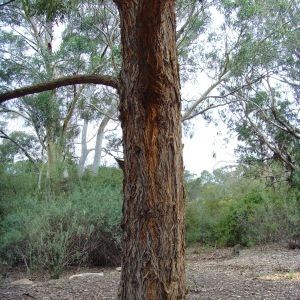Rank Species | ||
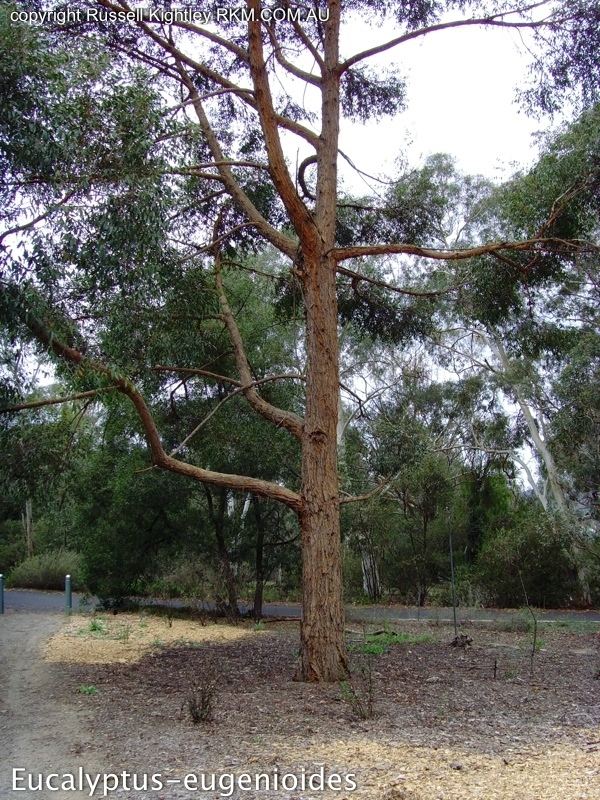 | ||
Similar Eucalyptus moluccana, Eucalyptus fibrosa, Eucalyptus globoidea, Eucalyptus laevopinea, Eucalyptus agglomerata | ||
Eucalyptus eugenioides, known as the thin-leaved stringybark, is a common eucalyptus tree in eastern Australia. It grows up to 30 metres (98 feet) tall in grassy forest or dry eucalyptus woodland on deep heavy soils of moderate fertility.
Contents

Taxonomy
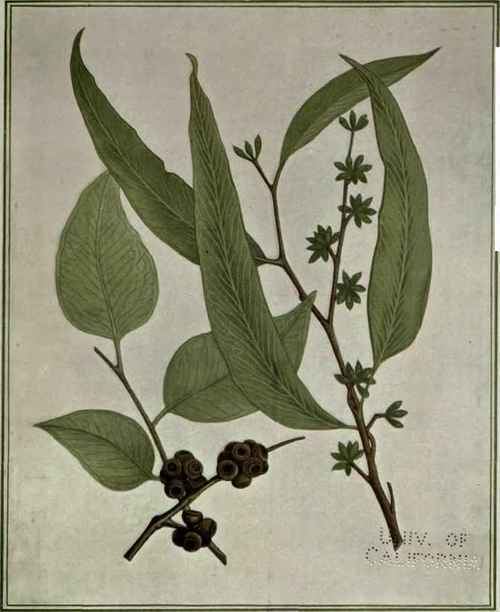
The thin-leaved stringybark was described by Kurt Polycarp Joachim Sprengel in 1827, although George Bentham in his Flora Australiensis regarded it as a subspecies of E. piperita. The species name relates to its similarity to trees of the genus Eugenia. Common names include pink blackbutt, small-leaved stringybark, Wilkinson's stringybark, white stringybark, as well as thin-leaved stringybark. The term "stringybark" refers to the long, thin bark fibres that can be pulled off the tree trunk in strings.
Description
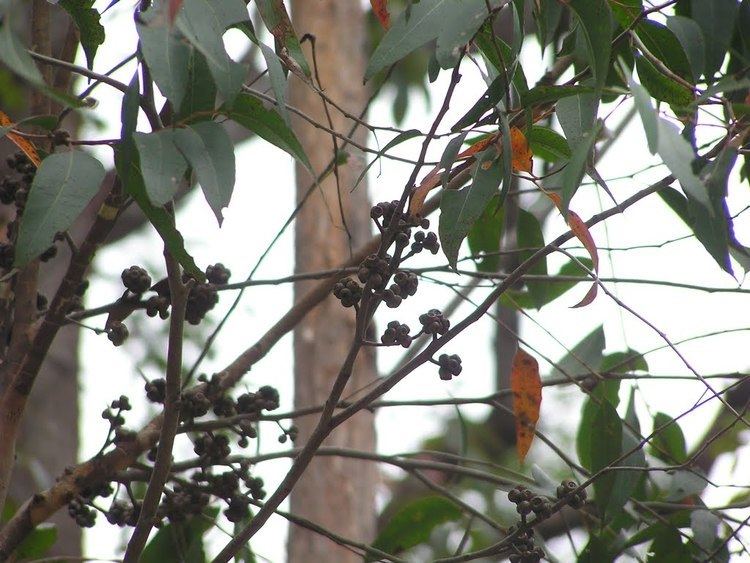
The thin-leaved stringybark is a straight-trunked tall tree that reaches 30 m (98 ft) high with a trunk that can be 70 cm (27.5 in) wide at chest height. Stringy in nature, the bark is grey to red-brown and remains on the tree. The matte green adult leaves are lanceolate (spear-shaped), and measure 10–14 cm (4–5.5 in) long, 2–3.3 cm (0.79–1.30 in) wide. The white flowerheads are arranged in groups of eleven and appear erratically anywhere from March to September.
Distribution and habitat
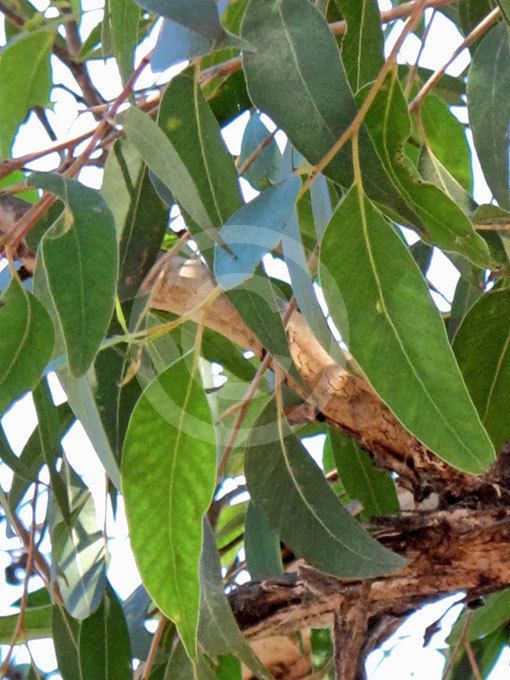
The thin-leaved stringybark is found across eastern New South Wales from Wyndham north to the Queensland border, and then continues to the vicinity of Warwick in southeastern Queensland, with scattered populations further north as far as Gladstone. It is a common tree of shale- and slate-derived moderately fertile soils in lowlands and low hills. It grows in open forest with other trees such as grey box (E. moluccana), forest red gum (E. tereticornis), cabbage gum (E. amplifolia), manna gum (E. viminalis), woollybutt (E. longifolia), narrow-leaved ironbark (E. crebra), and argyle apple (E. cinerea), spotted gum (Corymbia maculata), and paperbark species such as prickly paperbark (M. styphelioides) and white feather honeymyrtle (M. decora). The thin-leaved stringybark is one of the key canopy species of the threatened Cumberland Plain Woodlands.
Ecology

The thin-leaved stringybark regenerates by regrowing from epicormic buds after bushfire and can live for more than a hundred years. The longhorn beetle species Adrium artifex has been recorded from the thin-leaved stringybark.
Cultivation
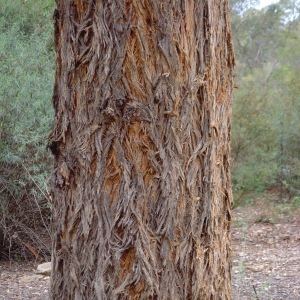
Eucalyptus eugenioides has been grown in California, where it grows best in coastal areas. In New South Wales, it is also known as "good kind stringybark" by beekeepers as the bees feeding on it are healthy and produce honey with a well-balanced amino-acid profile. It also provides the last crop of pollen before winter.
